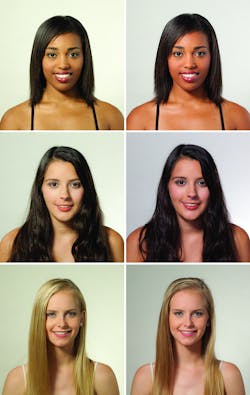Much of today’s discourse on lighting is focused on commercial and public spaces, and not residential. We’re often concerned about technical details, well-established formulas, and rules of thumb to engineer lighting rather than creating beautiful spaces. As we gradually return to the office, we may find ourselves reluctant to sacrifice the things we like about our comfortable homes. Now is the perfect time to reconsider office lighting and bring more beauty into our workplaces. Last year, Randall Whitehead and I wrote a book that explores classic design principles with solid-state lighting technology, calling it Beautiful Light: An Insider’s Guide to LED Lighting in Homes and Gardens (Routledge 2021).
We anchor the understanding of good residential lighting principles in holistic design practice, informed by history and evolutionary biology. Though we don’t discuss daylight at length, nearly all homes and interior spaces have a varied mix of light sources, including daylight. Learning to articulate these different sources in layers and balance them is essential to the art and science of lighting.
In the following edited excerpt from Chapter 4 of Beautiful Light, we consider one of the most overlooked ideas in lighting: illuminating people over objects and spaces.
Excerpt
Randall and I believe that the first principle of residential lighting — illuminating people — is the real “human-centric lighting.” It’s not only about how light makes you feel, but about how it makes you look (the two are obviously connected). Most people, including lighting designers, architects, interior designers, and homeowners, conceive of lighting as something that illuminates furniture, art, finishes, and materials — stuff we are keen to show off in order to demonstrate our taste and confer status. The best designers intuitively understand that, for better or worse, the need for status trumps almost all other human drives. This frequently results in poor quality lighting that can ruin an otherwise beautiful architectural, interior, or landscape design.
Few lighting designers today are trained from the beginning in lighting design, a relatively young profession without a large academic infrastructure behind it. Many begin in architecture, engineering, or theatrical design; a few come from photography. Typically, designers with theatrical or photography backgrounds best understand lighting people. Many top lighting designers consider Stanley McCandless to be the father of modern lighting design and have been strongly influenced by his work, which includes one of the seminal books on the theory of stage lighting, A Method of Lighting the Stage (Theatre Arts Books, 1st Edition 1932). Several valuable lighting lessons come from the theatrical tradition, where the actor’s ability to communicate emotion relies strongly on their face.
The effects of lighting on people are rarely considered by architects and interior designers. Single-source lighting is dramatic for lighting objects but unflattering for faces. Harsh shadows distort the face and can make people look scary or unfriendly, as in the Fig. 1 example with downlights only. Unfortunately, this represents a default condition favored by architects that recesses fixtures into the ceiling and preserves the clean lines of spare, modernist design. Gentle fill light softens shadows and makes people look better, which is why it’s commonly used in photography and film.
Illuminating humans — especially faces — presents several technical challenges, many of which have been successfully met by fashion photographers and theatrical designers for decades or centuries. The areas where most problems occur are direction and balance, color rendering, and color temperature.
Direction and balance
The same person can look dramatically different under different lighting conditions (Fig. 1 above). As previously mentioned, using only direct overhead light results in harsh shadows under the eyes and other areas of the face, an unflattering effect at best. In full backlit conditions, unmitigated glare from daylight or other sources can obliterate the face. Ambient light softens the face and makes it more appealing. Well-executed vanity lighting provides cross-illumination that renders the face at its best for the activities focused on attending to it — applying makeup and shaving. Balancing directional and ambient light can shape the face and add character.
Color rendering
High-color-rendering LEDs render the tones of skin, hair, and eyes more accurately and naturally than LEDs with lower color-rendering properties. In choosing LED light sources, this helps narrow your options. CRI (Color rendering index) is the most commonly accepted metric for color rendering. Although the IES standard TM-30 has been out for several years, it’s not yet universally used by lighting designers, and even less so with the general public. Most products you can buy off the shelf will have some indication of color rendering rating, but not all, and these should serve as a general guide. Use your own judgment and test everything on yourself and others, preferably in mock-ups, before you specify, purchase, and install.
In Fig. 2, photos taken in a studio setup show faces lit with two different 3000K LED light sources. On the left, the LEDs have low color rendering (80 CRI, 80 R9); on the right, the LEDs have high color rendering (95 CRI, 95 R9). In real life, we rarely compare light sources side by side, but the direct comparison shows how the low color rendering appears somewhat sickly and greenish. This demonstrates that our eyes are very good at detecting subtle but powerful color differences. The dramatic comparison emphasizes what we’re missing with poor color rendering in some LEDs. This discrepancy is still not widely understood; even the cosmetics industry doesn’t recognize it to the extent one might expect, as evidenced by the lighting at a typical department-store cosmetics counter.
When lighting people, you want everyone to look as good as possible. A subtle rosy glow is flattering to most skin tones, and all benefit from optimal color rendering.
Color temperature
We recommend choosing a color temperature that’s best for the use of the room. If electric light is used mostly at night, warmer temperatures are better; if it is used mostly during the day, a somewhat cooler temperature is more appropriate (Fig. 3). Many residential lighting designers will not use any light source with a color temperature cooler than 3500K for interior lighting partly because few 4000K light sources with good color rendering were available until recently. Fortunately, that has changed, and we’re comfortable with using them in the right context.
Final thoughts
Reorienting your design process for residential lighting by prioritizing people first may be a revolutionary concept, but it has no downside! It’s just a subtle shift in perspective. Making people look and feel their best is one of the most important parts of design. If you address that first, you will have automatically addressed many other residential lighting design challenges, which we cover in the other chapters of Beautiful Light.
You don’t even have to tell your clients what you’re doing — just watch their reaction when they love their new lighting. As Randall likes to say: “Great lighting for people is better than Botox!”
Excerpted and edited for space and clarity from Beautiful Light: An Insider’s Guide to LED Lighting in Homes and Gardens (copyright August 2021; published by Routledge, Taylor & Francis Group).
Get to know our expert
In addition to his roles as Program Director for LightSPEC West and LightSPEC Midwest conferences, CLIFTON STANLEY LEMON is a contributor to LEDs Magazine and CEO of Clifton Lemon Associates, a consultancy providing strategy, marketing, and education services to the lighting and energy industries. He was formerly business development director for the California Energy Alliance; marketing communications manager for Soraa; director of business development at Integral Group; and founder and CEO of BrandSequence. Clifton is an active writer and speaker and has extensive experience in curriculum development for professional training in lighting and energy efficiency. His book Beautiful Light: An Insider’s Guide to LED Lighting in Homes and Gardens, with co-author Randall Whitehead, was released in August 2021 by Taylor and Francis. He is a past president of the Illuminating Engineering Society San Francisco Section and is on the advisory board for LightFair International.
Online article extended with additional text — abridged version published in the June 2022 issue of LEDs Magazine.
For up-to-the-minute LED and SSL updates, follow us on Twitter. You’ll find curated content and commentary, as well as information on industry events, webcasts, and surveys on our LinkedIn page and our Facebook page.







